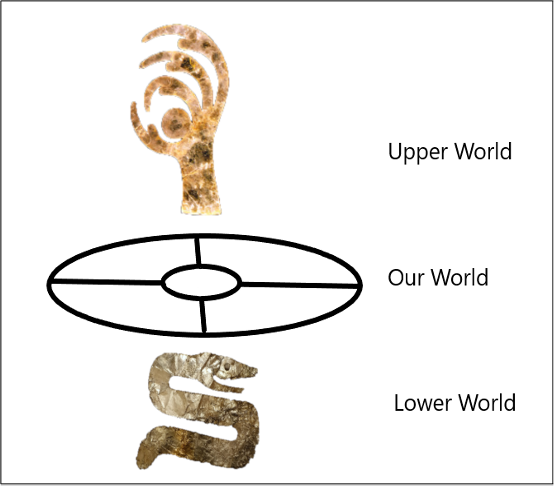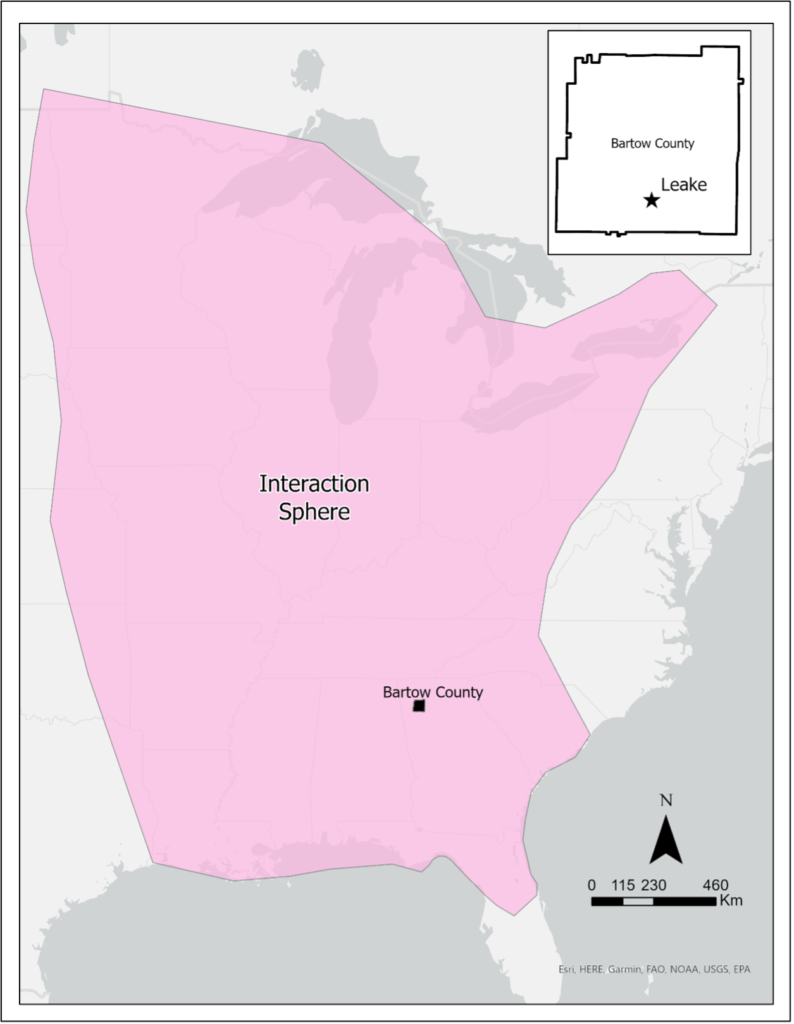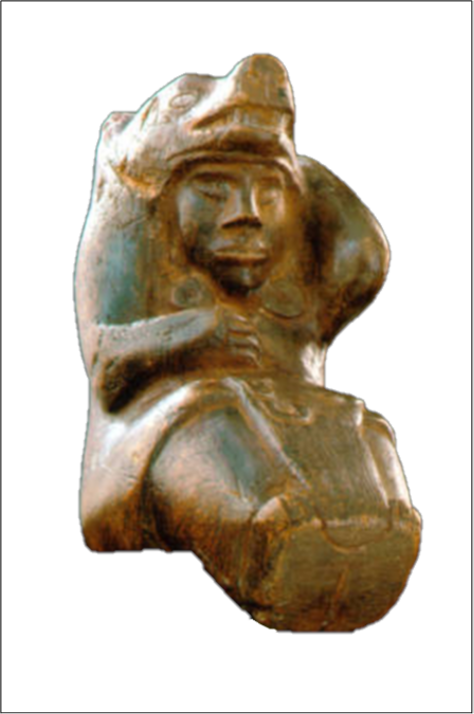Middle Woodland Religion in Bartow County
The Origins of Bartow’s Religious Heritage
Bryan Moss
Department of Geography and Anthropology
Kennesaw State University
April 11, 2023
During the Middle Woodland Period, 450 BC to AD 600, an expansive and complex religious and interaction network took place in Bartow County, involving community-wide ceremonies atop platform mounds and ceremonial feasting (Anderson et al. 2009:12-13). Associated with this complex was the Hopewell Interaction Sphere (HIS), which involved much of the Eastern Woodlands. This system could have been due to the diverse geography and geological resources located within the county. There are numerous mountains in the county along with 38 documented caves dotting the landscape (Sneed 2007). Caves were an important part of Native American religion, being places of great spiritual power (Brown 2013). Many of the caves and mountains contain evidence of Native American ceremonial practices (Sneed 2007).
Middle Woodland religion is based on Native American mythology involving their idea of the “worlds” which can be seen in their artwork (Charles et al. 2006; Redmond et al. 2019). Religious beliefs of the environment are based on the three worlds: the Upper World, Our World, and the Lower World. Different landforms which reach into these “worlds” became of ceremonial importance such as caves leading to the Lower World, and mountains leading to the Upper World (Romain 2009). Artwork was heavily influenced by these beliefs such as pipes, used for smoking tobacco, shaped like birds, representing the Upper World, and personal ornaments representing the Lower World with snake-like imagery (Charles et al. 2006) (Figure 1).

Figure 1: Example of Artistic Representations of the Three Worlds, Sheets of Mica from the Ohio History Connection https://tinyurl.com/25b375be and https://tinyurl.com/mna5zyvb.
As stated above, religion during this period was associated with the Hopewell Culture, a culture of complex mortuary practices and extensive interaction along the eastern United States, centered in the Ohio and Illinois Valleys. The area around Cartersville was a hotspot for Hopewell activities, the main one being at the Leake Site, a major ceremonial center on the banks of the Etowah River (Keith 2013). Artifacts have been found which directly link Bartow County with the Hopewellian Interaction Sphere (Figure 2).

Figure 2: The Hopewell Interaction Sphere. Map by Bryan Moss.
There were many material aspects of the Hopewell Culture, especially when it came to animals and cosmology. There is evidence that within the Hopewell Culture there were shamans of different animals who would wear headdresses of their associated animal, such as deer antlers and bear skin. These shamans played a key part in the religion as they were thought to have been able to transform into the animals they represented (Figure 3). Clay figurines were made for them depicting this transformation (Romain 2011).

Figure 3: Effigy Showing the Transformation from Man to Bear, Effigy from the Ohio History Connection https://tinyurl.com/4v675mfa.
Metallurgy and ceramic work of the Hopewell Culture is sophisticated, much like those found at the Etowah Indian Mounds during the Mississippian period. Sheets of copper were hammered out and worn by shaman shaped as their animal, whether it be in the shape of a bird for a Raptor Shaman, or a bear paw, representative of a Bear Shaman, as seen in Figure 3 (Byers et. al 2010). Copper ornaments were common during this time period for both ceremonial as well as personal decoration.
The pottery of the Hopewell people also stretched to Leake as well as to other sites further south like Kolomoki in Early County, Georgia (Stephenson et al. 2009). The primary ceramic type was Swift Creek Complicated Stamped, which has been found at Leake (Keith 2013), Kolomoki (Pluckhahn 2010), and Tunnacunhee located in north Georgia (Williams et al. 1998). The amount of Swift Creek material found at Leake was around 15,000 sherds (Keith 2009), demonstrating the strong connection between Leake and other HIS sites in the region.
In sum, the Middle Woodland period saw the rise of a widespread interaction involving a large mortuary culture. The religion during this time influenced much of the Native American population within the county including their spiritual beliefs in caves dotting the county (Sneed 2007), and their mound center at Leake (Keith 2009). The material culture related to their religious beliefs included pottery and crafted clay figurines, as well as cut pieces of mica. The symbolism of these religious images involves many Middle Woodland cultures and beliefs involving the realms of the universe and how they relate to important religious figures such as the Bear and Raptor Shaman. Their beliefs involving cosmology and spiritual transformations (Romain 2011) shaped their material culture and possibly their mounded landscape (Anderson et al. 2009). The Middle Woodland period saw the development of religious practices in what is now Bartow County. The importance of the county can be seen by the large number of ceremonial mounds, caves, and the Leake Site which was an important pilgrimage site.
Anderson, David G., Tristam R. Kidder, Patty Jo Watson, Janet Rafferty, Joseph M. Herbert,
Evan Peacock, and Debra L. Gold
2009 The Woodland Southeast. University of Alabama Press, Tuscaloosa.
Brown, J.A.
2013 On Ceremonial Landscapes. In Early and Middle Woodland Landscapes of the Southeast, edited by Alice P. Wright and Edward R. Henry, pp. 237–246. University Press of Florida, Gainesville.
Byers, Martin A., and DeeAnne Wymer
2010 Hopewell Settlement Patterns, Subsistence, and Symbolic Landscapes. pp. 56-71. University Press of Florida, Gainesville, Florida.
Carr, Christopher, and Heather Smyth
2019 Soul Concepts of Scioto Hopewell Communities. In Encountering Hopewell in the Twenty-First Century, Ohio and Beyond, edited by Redmond, Brian G., Bret J. Ruby, and Jarrod Burks pp. 154-169. The University of Akron Press, Akron.
Charles, Douglas K., and Jane E. Buikstra
2006 Recreating Hopewell. Ohio: University Press of Florida, Gainesvillle, Ohio.
Hopewell Culture, “Wray Figurine,” Open Virtual Worlds. Accessed September 19, 2022,
https://openvirtualworlds.org/omeka/items/show/1062.
Keith, Scot
2013 The Woodland Period Cultural Landscape of the Leake Site Complex. In Early and Middle
Woodland Landscapes of the Southeast, edited by Alice P. Wright and Edward R. Henry, pp. 138-152. University Press of Florida, Gainesville.
Pluckhahn, T.J.
2010 Kolomoki: Settlement, Ceremony, and Status in the Deep South, AD 350 to 750. University
of Alabama Press, Tuscaloosa.
Romain, William F.
2011 Shamans of the Lost World: A Cognitive Approach to the Prehistoric Religion of the Ohio
Hopewell. AltaMira Press, Lanham.
Sneed, Joel M.
2007 Bartow County Caves: History Underground in North Georgia. Flowery Branch,
Georgia.
Stephenson, K., J.A. Bense, and F. Snow
2009 Aspects of Deptford and Swift Creek in the South Atlantic and Gulf Coast Plains. In The
Woodland Southeast, edited by Anderson, David G., Tristam R. Kidder, Patty Jo Watson, Janet Rafferty, Joseph M. Herbert, Evan Peacock, and Debra L. Gold, pp. 315-335. University of Alabama Press, Tuscaloosa.
Williams, M., and D.T. Elliott
1998 A World Engraved: Archaeology of the Swift Creek Culture. University of Alabama Press, Tuscaloosa.
